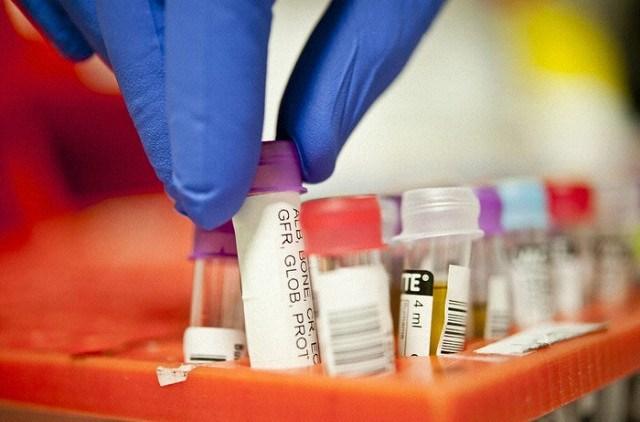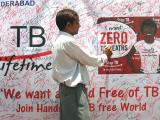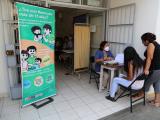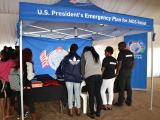Today's 35th annual observance of World TB Day comes alongside a report of a scientific advancement that could give doctors a way to determine ahead of time which patients with latent Mycobacterim tuberculosis infections are most likely to develop the active form of tuberculosis (TB).
Nearly a third of the global population is thought to be infected with TB, but only a small number progress to having symptoms. The identification of key blood markers took more than a decade, with the team publishing its findings yesterday in an early online edition of The Lancet.
Groups mark TB Day
Marking World TB Day, the World Health Organization (WHO) earlier this week called on countries and health partners to "Unite to End TB." Though countries have made significant progress against the disease, with 43 million lives saved since 2000, more work is needed to drive down the number of deaths, the WHO said in a Mar 22 statement.
It added that the disease kills nearly 4,000 people each day, with poor and vulnerable communities hardest hit.
The WHO said the new "sustainable development goal" target is ambitious: to end TB by 2030. Several countries have expanded clinical services for patients with TB, including testing for multidrug-resistant TB (MDR-TB), including India, South Africa, Thailand, Russia, Brazil, and Vietnam. The agency added, however, that more collaboration is needed to tackle challenges, such as weak country health systems and MDR-TB.
Other groups recognized World TB today with the release of special reports and scientific publications. For example, the US Centers for Disease Control and Prevention (CDC) said today that progress against the disease seems to have stalled, according to its latest surveillance figures.
Evidence for gene signature prediction
The blood marker investigation, by an international team of researchers, began in 2005 and consisted of two parts. First, the team spent 2 years collecting blood samples from about 6,000 adolescents in South Africa who had latent TB infections but were otherwise healthy. They identified a gene signature pattern that differed in the blood samples of those who did and didn't progress to active TB infections.
The study's funders were also international in scope, including the Bill and Melinda Gates Foundation, the National Institutes of Health (NIH), and groups from the European Union and South Africa.
The gene signature the researchers found consisted of 16 genes that were detectable in blood samples as early as 18 months before an individual with latent TB developed active infection.
To gauge how predictive the gene signature was, the team next looked at blood samples from more than 4,500 people in South Africa and Gambia, a group what was more diverse in age, ethnicity, health status, and exposure to local TB strains. Despite those differences, blood tests revealed the same gene signature in people from the second arm of the study who went on to develop active TB.
The researchers said the results pave the way for a diagnostic test that could be scalable and inexpensive, offering the potential to interrupt the global epidemic, but they added that studies in the general population are needed to confirm their findings.
In a Lancet commentary today on the findings, two pediatric infectious disease specialists from Imperial College in London said a test to sift out those who are at greatest risk for disease progression would be a leap forward for TB control, but a long journey lies ahead for a clinical test. The authors are Michael Levin, MD, and Myrsini Kaforou, MPhil.
Challenges include translating the signatures into a test that is easy to use in low-resource countries and fine-tuning the sensitivity and specificity for use in high-burden countries, the two wrote. However, they added that the group's findings should encourage further research into methods to identify the people with latent TB who are likely to develop full-blown infections.
Stalled US progress
According to a CDC analysis of preliminary data from 2015 in today's Morbidity and Mortality Weekly Report (MMWR), TB incidence was 0.3 cases per 100,000 persons, about the same as for 2013 and 2014. The authors noted that from 1993 to 2012 the annual incidence had been on a downward trend, with each year 0.2 per 100,000 or more lower than the previous year.
They say it's not clear why progress has stagnated after two decades of declines. To get levels declining again, the United States will need to step up its efforts domestically and internationally, with a focus on flagging and treating latent infections to interrupt transmission and helping to speed up decreases globally, they add.
In a separate MMWR report today, researchers from the CDC and their state and local health partners detailed three foreign-born workers with infectious TB who held temporary jobs at different US tourist destinations. They said working conditions and delayed diagnosis might have increased the risk of spread, and that public health officials and employers might consider educational outreach or TB screening for workers from countries that have high TB burdens.
See also:
Mar 23 Lancet abstract
Mar 22 WHO statement
Mar 23 Lancet editorial
Mar 23 NIH press release on TB test
Mar 25 MMWR report on TB incidence in the United States
Mar 25 MMWR report on TB in foreign temporary workers





















